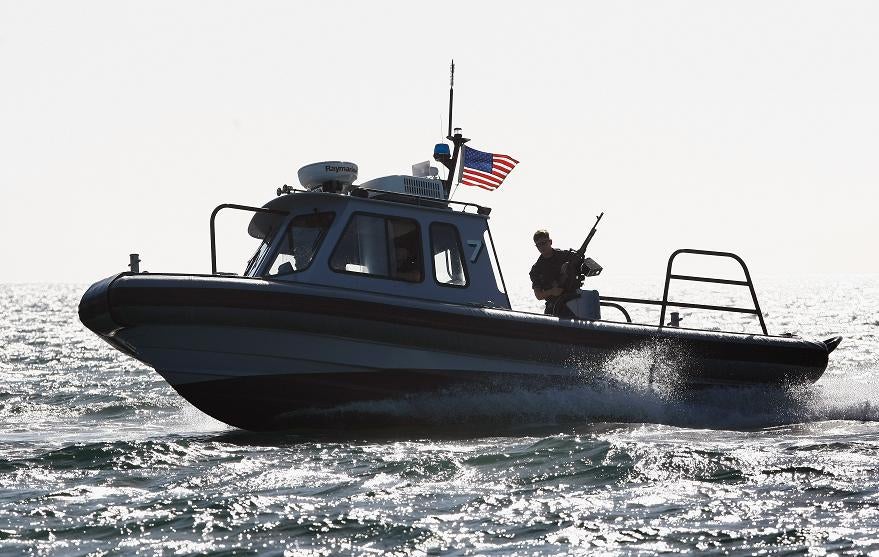BAE and Thales plot course for smaller warships to fight pirates

BAE Systems and Thales are among defense companies increasing their focus on patrol vessels to drive naval sales as countries from Libya to Brazil modernize and expand their fleets.
The market for offshore patrol vessels in the next 10 to 15 years is estimated at 14 billion pounds ($22.4 billion), said Ian Leach, a business development executive for BAE's naval ships business. About 15 percent of that market will be up for competition, he said.
Growing concerns about piracy and protecting offshore areas of economic interest have increased demand for patrol ships in the 90-meter-long class that can go out to about 200 nautical miles. The lower price of such vessels compared with larger warships has made this sector among the fastest-growing for navy equipment providers.
"There is major growth in the market for offshore patrol vessels," Thales Chief Executive Officer Luc Vigneron said Tuesday during the Euronaval warship exhibition outside Paris. "We are going towards lighter, less complex, less expensive equipment because the overall trend on surface ships is to lighter, smaller and less expensive ships."
Thales owns 35 percent of French shipyard owner DCNS. That stake accounts for 20 percent of Thales's naval sales. The remaining 80 percent comes from offerings other than ship- building, such as radar. Maritime sales will increase as a percentage of defense revenue within Thales, Vigneron said.
Among the emerging customers for offshore patrol vessels is Libya. The government is starting to plan its fleet replacement after a civil war last year and BAE sees the country as a potential customer, Leach said.
BAE has focused on fixing parts of its naval business and has avoided chasing new contracts after development problems on projects such as the building of offshore patrol vessels for Oman. This phase is nearing an end and the delivery of three ships to Oman is scheduled to start next year.
This month, BAE delivered the first of three similarly sized ships to Brazil. These were resold after the original customer, Trinidad and Tobago, didn't take delivery. The second handover is due this year, and by the end of next year BAE wants to focus on booking orders again for new customers, Leach said.
To help win contracts in the smaller-ship market, Lockheed Martin has spent several years developing an unclassified version of the combat management systems used on the U.S. Navy Littoral Combat Ship, said Douglas Wilhelm, director of international programs for the company's Mission Systems & Sensors unit. The technology, which links sensors and weapons, will be offered to shipyards pursuing patrol vessel deals.
Although demand in emerging markets is particularly strong for smaller vessels, one of the largest programs will be in the U.S., where the Coast Guard last month requested proposals for the first 11 of 25 Offshore Patrol Cutters. The program cost could exceed $8 billion and production could stretch until 2033 if all 25 ships are built.
DCNS will be among the companies competing for the contract, Chief Executive Officer Patrick Boissier said in an interview.
"The U.S. market is huge and a stable one, but if you want to pursue it you have to be American," he said. In the absence of its own U.S. operation, DCNS has teamed with Pascagoula, Miss.-based VT Halter Marine to make a bid.
Demand for patrol vessels is attracting more suppliers. Seoul-based Daewoo Shipbuilding & Marine Engineering, for instance, is trying to enter the export market, said a company official, who asked not to be named because she was not authorized to speak to the press.
While worries about piracy are increasing demand for smaller ships, concerns about ballistic missiles are helping sustain sales of new, larger vessels and are driving upgrades to existing ones.
"Ballistic missile defense is a major demand driver right now," Lockheed's Wilhelm said. The company provides the Aegis weapons system used by the U.S. Navy shoot down ballistic missiles with Raytheon Standard Missile 3 interceptors.
Turkey, Brazil and Canada are among countries that have said they are looking for new frigates with air-defense and potential missile-interception capabilities.
The Netherlands is exploring an upgrade of the Thales radar on its frigates so they can use the Raytheon interceptor, which carries an upper-stage, or kill vehicle, which collides with the target to destroy a long-range missile's warhead outside the atmosphere.
A ground demonstration to link the radar and interceptor is due before the end of the year, Daniel Lambert, a senior manager at Raytheon Missile Systems, said in an interview.
Interest in missile defense has prompted DCNS to offer an upgrade to its FREMM frigate, called FREMM-ER for "extended range." It features a new Thales radar to counter more modern threats, including short- and medium-range ballistic missiles, said Gilles Langlois, the shipmaker's product development director for surface ships.
BAE is also keeping an eye on the larger ship market as it continues to look for partners for its Type 26 Global Combat Ship now in detailed design for the Royal Navy. Canada, Brazil and Australia are among potential buyers, Leach said.
The ship is being designed to meet some high-end requirements for Britain and such features could be removed to make the vessel cheaper for other customers, Leach said.
"India, Brazil and other want to have all the attributes of global powers and that makes the naval business a fast- growing market," DCNS's Boissier said.
Join our commenting forum
Join thought-provoking conversations, follow other Independent readers and see their replies
Comments
Bookmark popover
Removed from bookmarks